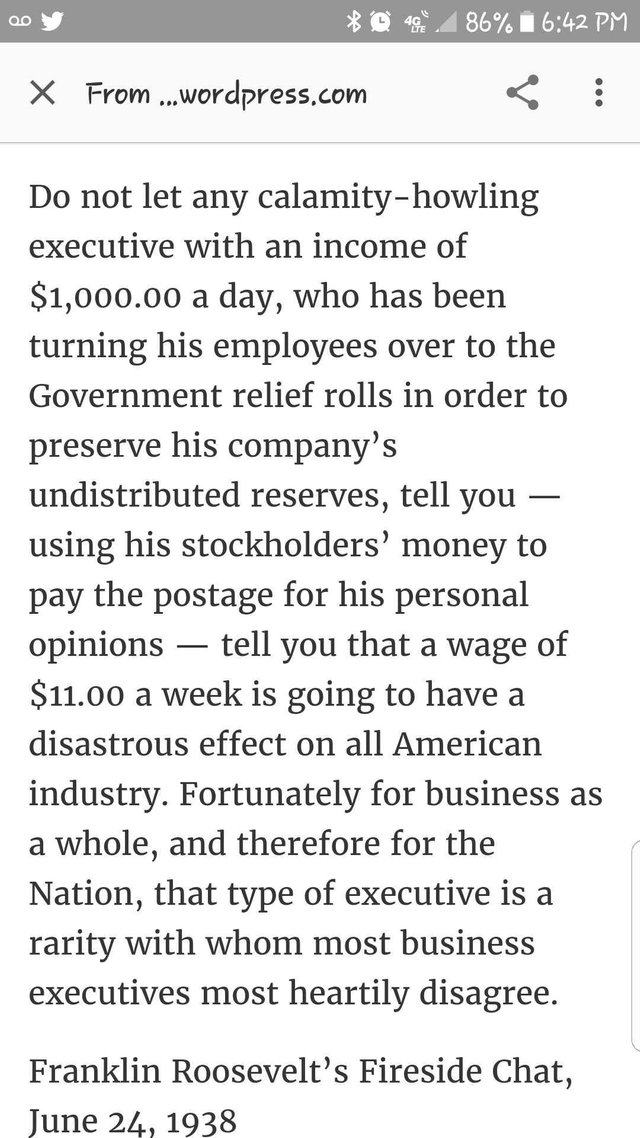The Truth About Minimum "Living" Wage (Hint: it's how much a child is supposed to make)

On Saturday, June 25, 1938, to avoid pocket vetoes 9 days after Congress had adjourned, President Franklin D. Roosevelt signed 121 bills. Among these bills was a landmark law in the Nation's social and economic development -- Fair Labor Standards Act of 1938 (FLSA). Against a history of judicial opposition, the depression-born FLSA had survived, not unscathed, more than a year of Congressional altercation. In its final form, the act applied to industries whose combined employment represented only about one-fifth of the labor force. In these industries, it banned oppressive child labor and set the minimum hourly wage at 25 cents, and the maximum workweek at 44 hours.
In other words, minimum wage has always been intended to work in conjunction with child labor laws as they were part of the same Bill. Minimum wage was set in order to protect children from exploitation in the workforce. Essentially, if an employer wanted to hire children they are required to pay them a minimum amount instead of trying to get one over on them with 25 cents a day.
Once again, this comes to show that minimum wage isn't intended to be an amount equivalent to maintaining a household, it is intended to be an amount that a minor can expect to be paid. And that amount is based on the idea that a minor can use the money to line their own pockets with or help the household.
So, if you're 18 years of age or older and you're complaining that minimum wage isn't enough to run your household, then the problem doesn't lie with minimum wage, the employers, or the corporations. The problem is that you only have the job skills and work ethic of a 15 year old, and it's time for you to buckle down and grow up!